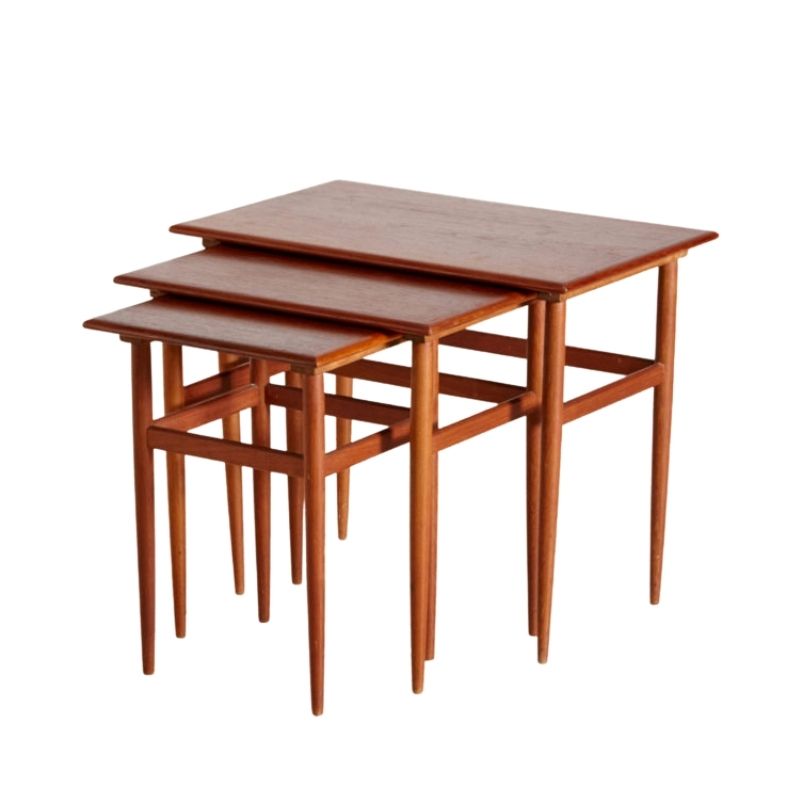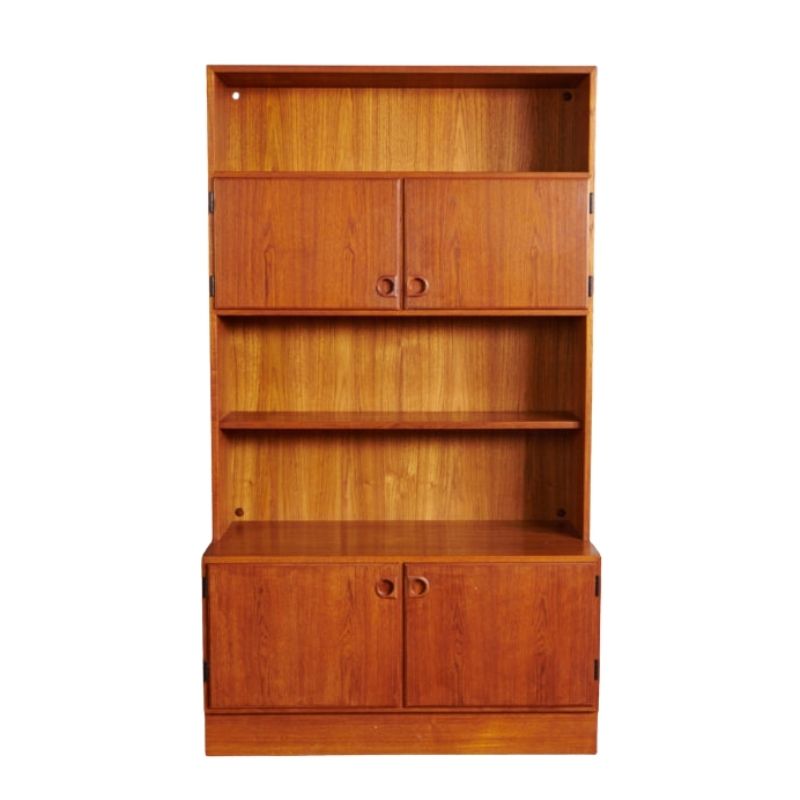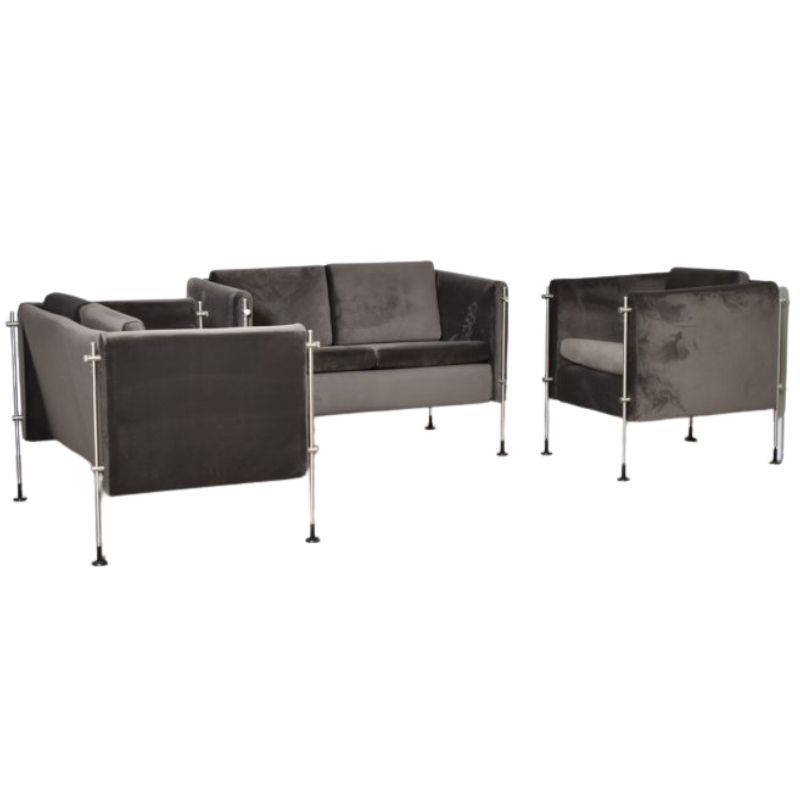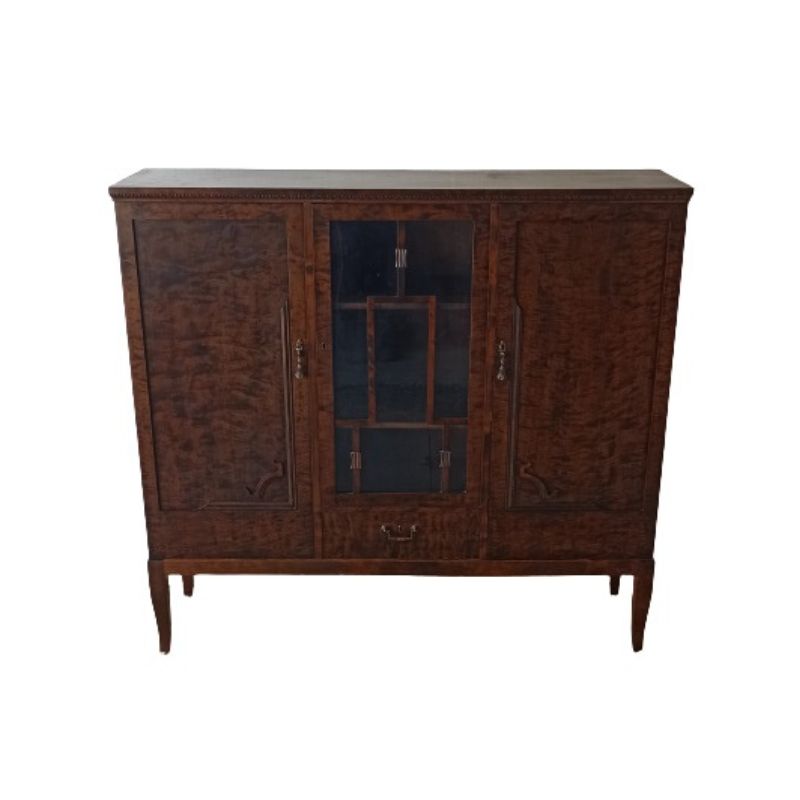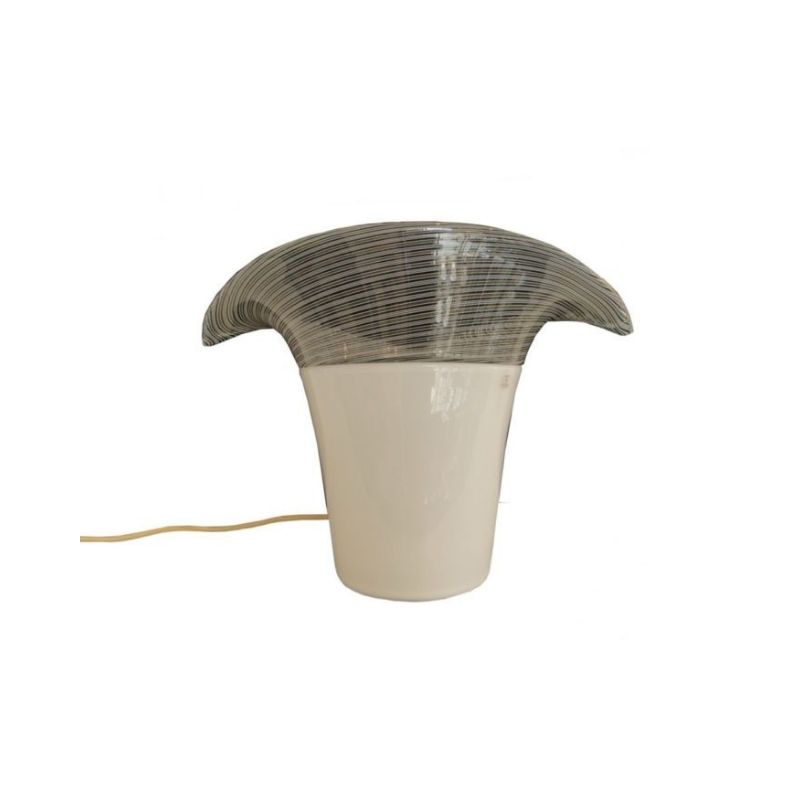Ack. My iPad did something weird there, sorry. Yes, it was old fashioned animal hide glue. Johannes Aasbjerg's son remembers having to move very fast to laminate a table top with it. (He also used PVA glue sometimes, although I have not seen that in any of my pieces).
Makes me wonder if the staved teak with black/dark brown glue lines from Dansk or France and Søn, to name a couple of examples, was also hide glue.
It was made in the early 60s.
Well, in solid "staved" teak glued with hide glue I have:
-a sideboard and china cabinet (3/4" thick)
-a dining table that extends to 8' (again 3/4" thick top),
-Two coffee tables (2" thick).
And they are all 50 years old. So I guess it works. Or Aasbjerg and his brother knew a trick to make it work. Closely observing their work is an advanced education in cabinetry.
Oh, and Gropius: I don't know how long they used it for, or if they used it for the whole run. I don't have any later Aasbjerg pieces, say from the 70s. The son mentioned that they also did use PVA glue in the shop. I have yet to see evidence of PVA glue in my 10 or so Aasbjerg pieces from the early to mid 60s. So I am guessing that it might have been later.
Why do you ask?
Just curiosity about when the technology changed and what would be appropriate for repairs. I had always assumed that hide glue was mostly replaced by mid 20-century so this is a surprising result. I wonder if it was still being used in the US as well as in scandinavia? I bought some hide glue pellets, but haven't felt the need to reconstitute it. I read what you mentioned - that it sets pretty quickly - which would be a big disadvantage for me since my repairs usually require a lot of time to clamp properly.
I don't think I would regard Aasbjerg as indicative of the wider industry. He and his brother did things a bit differently. In general, for joinery I see PVA glue was used. It is only in laminating (or "staving") solid teak, which only exists in a small portion of the Danish pieces out there, that I don't see PVA glue (because it creeps and thus isn't very appropriate for the usage). It is an open question whether others used hide glue or UF glue or even resorcinol for laminating.
If you need any help, please contact us at – info@designaddict.com



